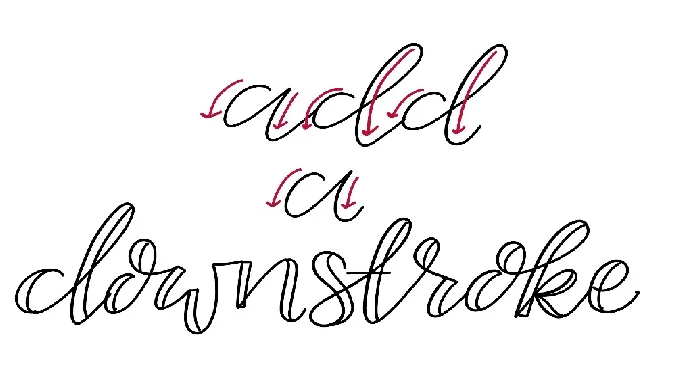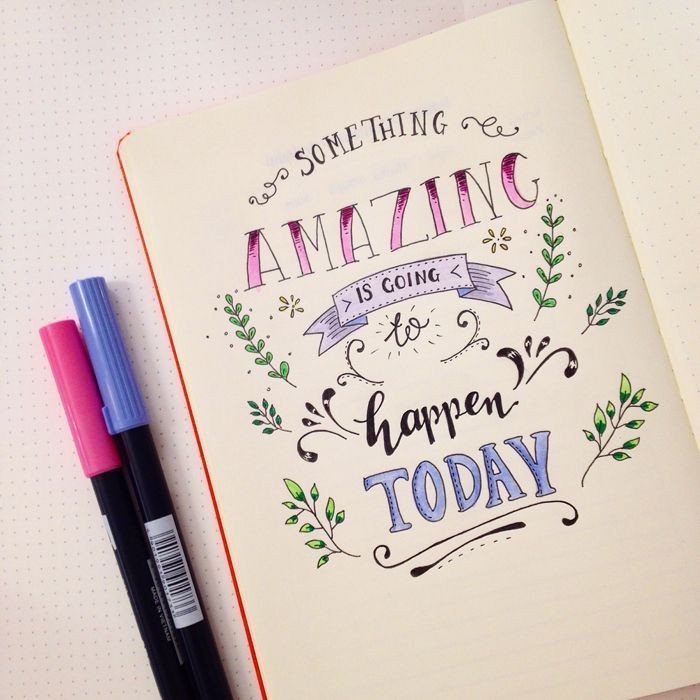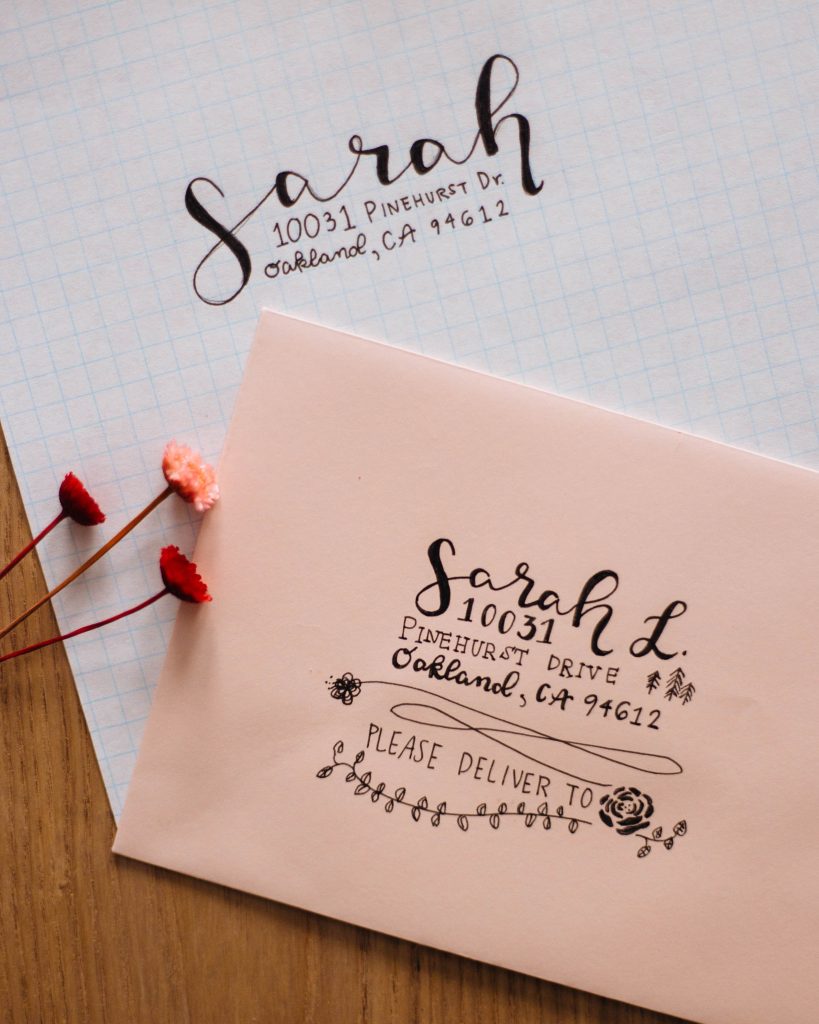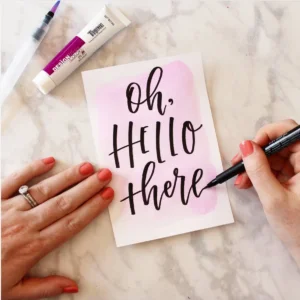Caligraphy has been practised for centuries. It was used to add artistic touches to books, inscriptions, invitations, logos, certificates, records and font design. Calligraphy is still popular as a decorative tool. It can instantly elevate a card or gift. However, brush lettering or calligraphy seems very difficult to copy. But, this is not true. Faux calligraphy alphabet is a hack for brush lettering that anyone can easily create. It is simple and does not require years of practice or expensive materials.
In this article, we will discuss how to create faux calligraphy alphabets and the benefits of doing so.
Materials Needed To Create Faux Calligraphy Alphabet
Faux calligraphy does not require any fancy nibs or brush pens. Therefore, there is no cost to getting started. You can use a regular pen or pencil instead. Apart from this, you will also require a notepad or cardstock to write on.
Stationary you can use include,
- A sheet of paper
- A ruler
- A pencil
- An eraser
- A ballpoint pen, gel pen or fine liner. We suggest using a fine liner as it provides a better finish.
Basics Of Faux Calligraphy Alphabet
Faux calligraphy has three rules. They are

Writing calligraphy involves a combination of upward as well as downward strokes. The important this is that upstrokes are thin while downstrokes are thick.
Therefore, you can practice calligraphy by practising some basic up and down strokes, followed by small and capital alphabets.
2. Consistency
Consistency is crucial for clean calligraphy. Having all your letters on a straight line will make it look good. You can use guidelines to help you do so. This will ensure that all your letters are the same height, width and angle.
Furthermore, you should keep all downward strokes the same thickness. Any noticeable difference will spoil the look of your artwork.
3. Where to add the downward strokes?
You must ensure that there is enough space in between each alphabet to add downstrokes. This will let you add the strokes without any overcrowding. A hack is to always stick to adding thickness to the inside of the letter. Thus, you know how much space to leave in between each alphabet.
How To Create Faux Calligraphy Alphabet?
1. First, draw guidelines using a ruler to write your word.
2. Write a word or phrase on the paper
The second step to creating faux calligraphy is to write a word or phrase in cursive on paper. If you cannot write in cursive, a print style also works to create beautiful work. Ensure to leave space in between each letter.
3. Add a line to the downward strokes

Retrace the writing to identify the downward strokes. Leave all sideways and upward strokes. Now draw lines parallel to the downstrokes such that it hugs the outlines of the letters. In addition, keep the thickness constant throughout the word or phrase.
4. Fill the downward strokes
Fill the gaps between the double-lined downstrokes to make them thicker. Furthermore, if you are using a coloured pen, you can create more vibrant hues by adding more layers of the same colour.
5. Finally, display or gift your faux calligraphy creation.
Tips To Create Faux Calligraphy Alphabet
1. Get a proper work environment
You cannot practice calligraphy while lying on the couch and watching TV. Instead, you need to sit with the correct posture at a table. Furthermore, the table must have adequate height and light.
2. Stick to shorter words while starting
Do not be in a rush to try out complex phrases or sentences as well as flourishes and designs. You need to go slow. Practice single words to gradually expand your skills.
3. Keep practising
The more you practice the easier faux calligraphy gets. Consistent practice of at least 20 minutes every day will help you master the craft.
Additionally, just randomly scribbling on a piece of paper will not help. You need to structure your practice sessions. You can do so with,
- Warm-up drills
- Repeatedly practice a single word or phrase
- Force yourself to create a final piece. You can keep this for future comparison
- Analyze your work to identify places where you can improve.
Practising your faux calligraphy will make it easier and more beautiful. If you think that this is a waste of time then think again. Learning faux calligraphy is a stepping stone to practising traditional calligraphy. If this is your goal then practising faux calligraphy is a good idea. It also offers other benefits as mentioned below.
Benefits of Faux Calligraphy
Calligraphy Enhances Your Living Space
You can use calligraphy to create a variety of home decor pieces like art, labels etc. This will elevate the space and make it feel homier.
Calligraphy Adds Beauty to Sketchbooks, Planners and Bullet Journals

If you love writing in a bullet journal or planner or drawing in a sketchbook then calligraphy is for you. Hand lettering enhances the pages of the book, making them more memorable. Additionally, it also helps preserve emotions regarding the contents of the page.
Calligraphy Can Show Affection

Calligraphy can be used to personalize gifts and cards. Therefore, it can help show your loved ones that you care.
Final thoughts
Faux calligraphy is a fun activity to partake in with kids. Children of all ages will surely find this activity entertaining. You can make a day out of it by encouraging them to make a birthday or thank you cards for friends and family.
By following the above simple steps, your kids can create beautiful lettering that may also improve their handwriting in the long run.
Share with your friends






